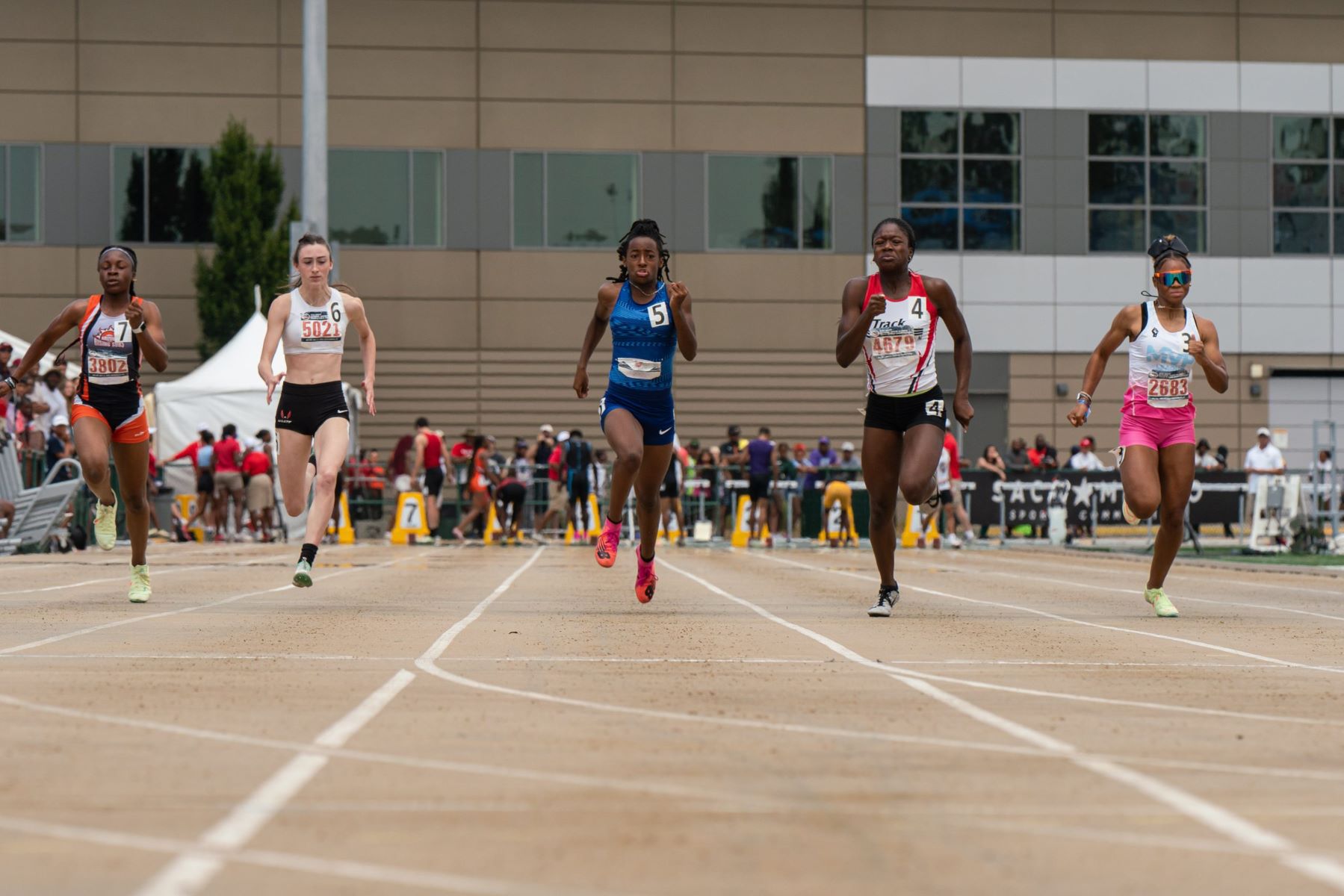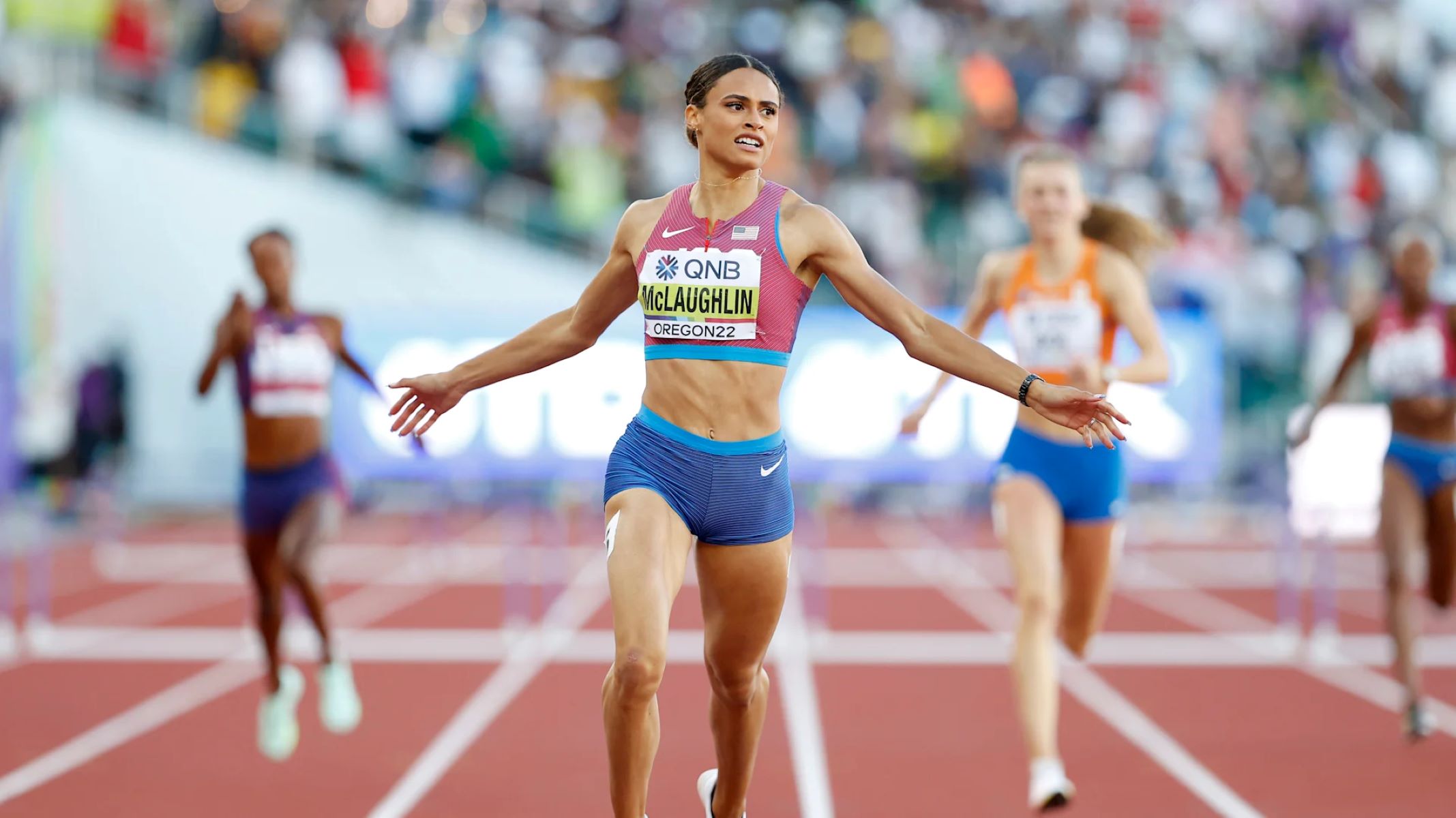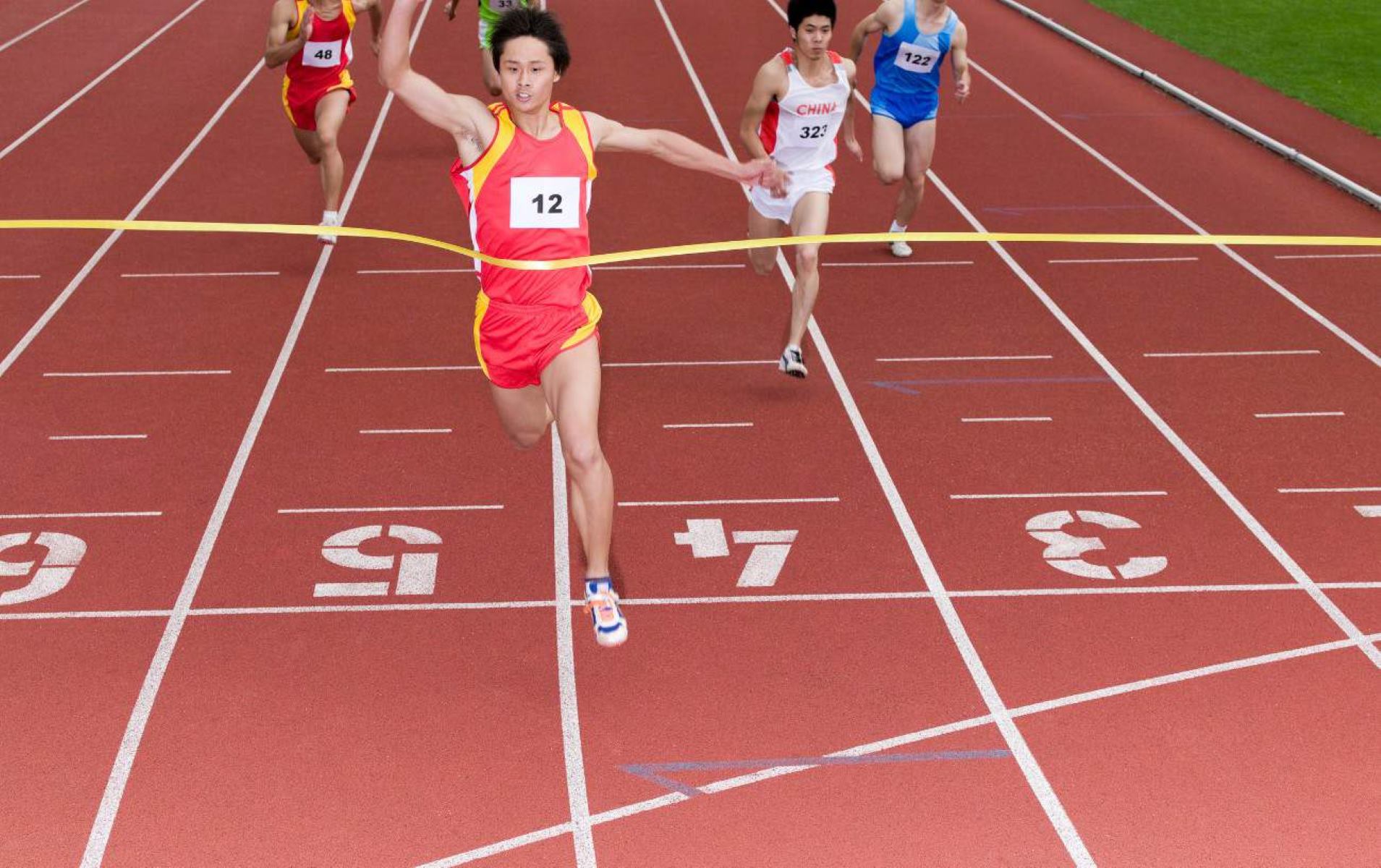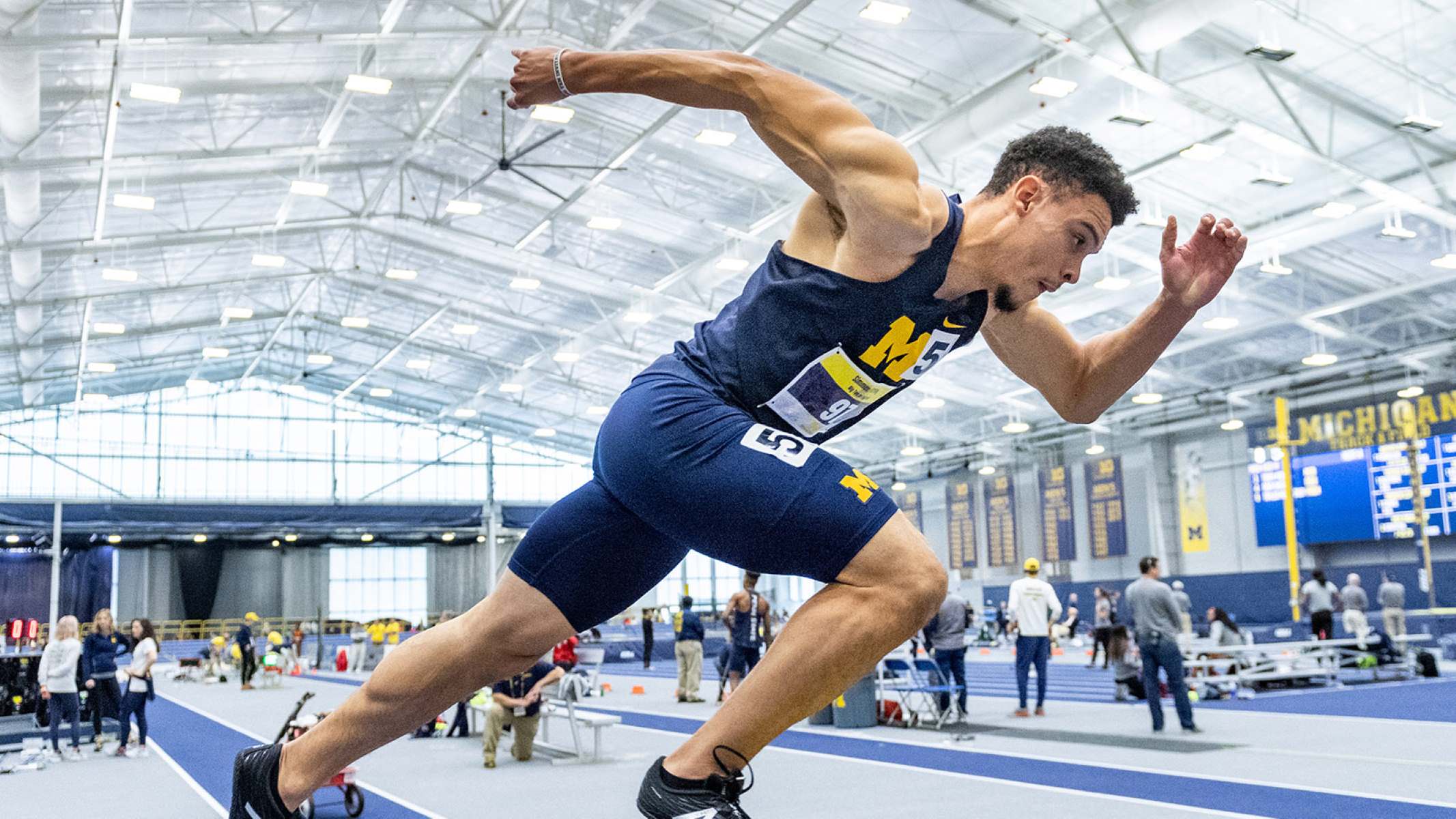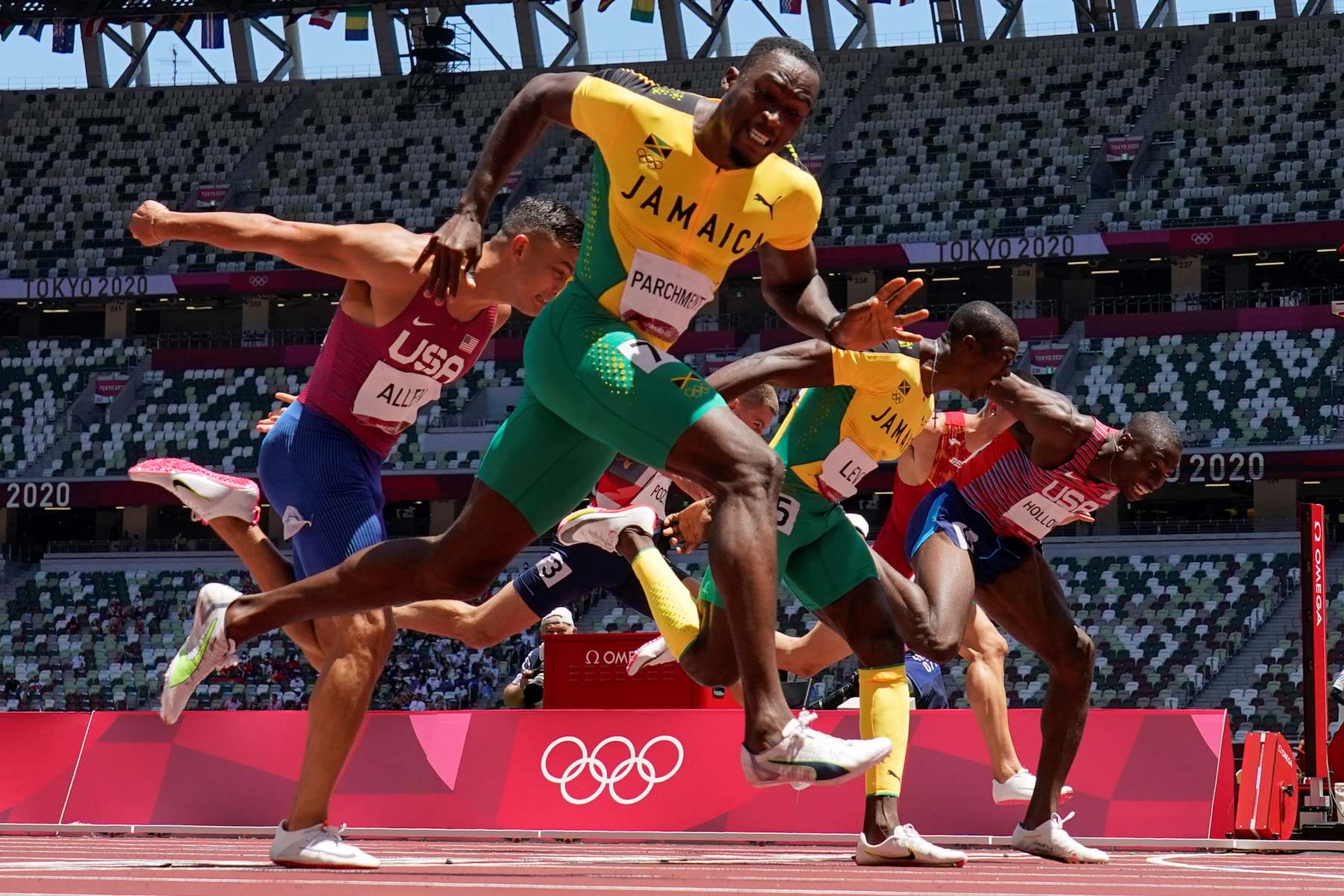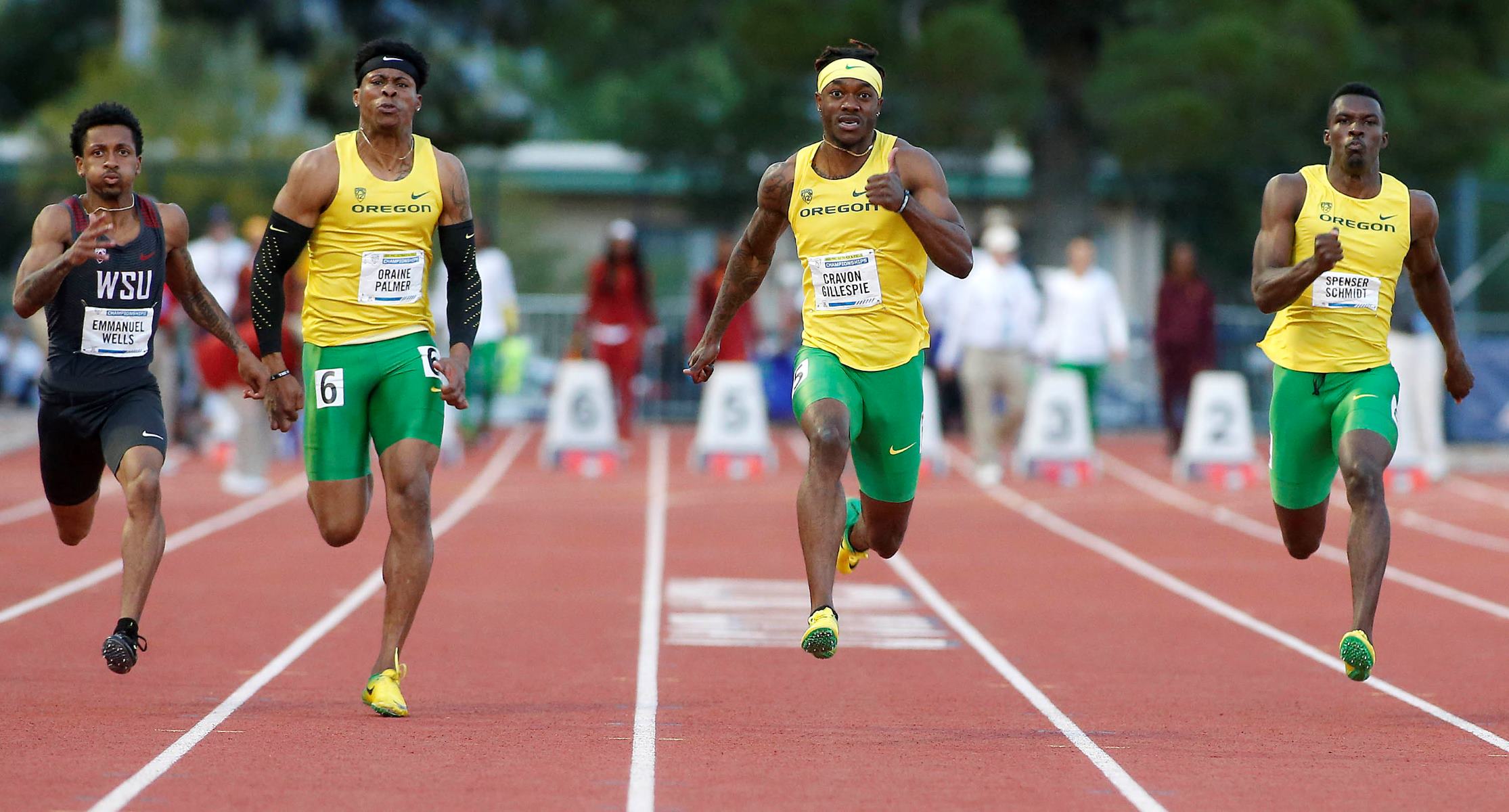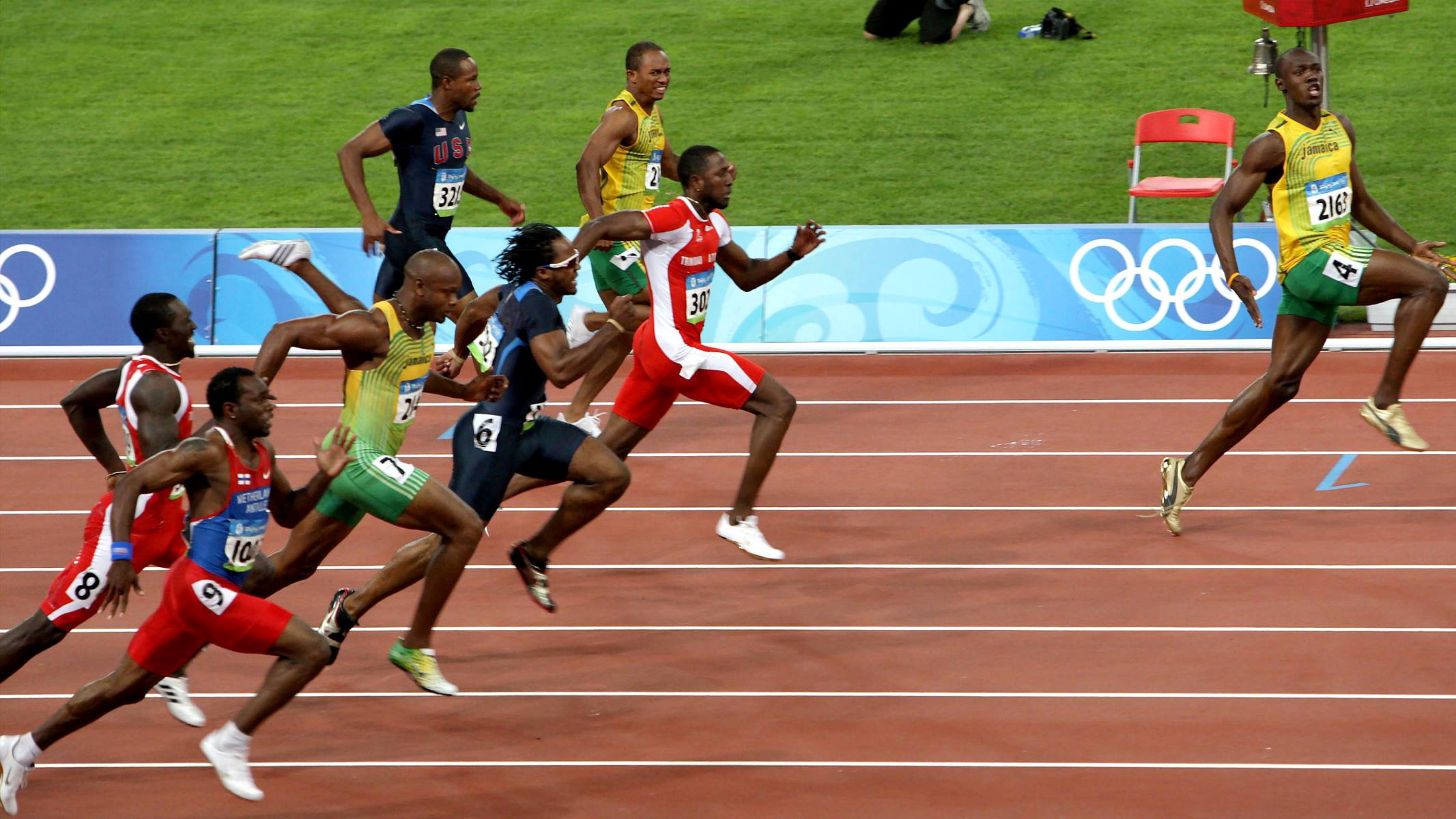

Featured
What Does OR Mean In Track And Field
Modified: January 2, 2024
Discover what the acronym OR means in track and field. Explore the various interpretations and significance of this featured term.
Introduction
Welcome to the exciting world of track and field, a sport that combines speed, power, agility, and endurance in a thrilling display of athletic ability. Whether you’re a fan, a participant, or simply curious about the sport, this article aims to provide you with a comprehensive understanding of track and field, including its origins, events, rules, training techniques, and more. Strap on your running shoes and get ready to dive into the fascinating world of track and field!
Track and field has a rich and storied history that dates back to ancient times. The sport emerged from the ancient Olympic Games in Greece, where athletes competed in various running, jumping, and throwing events. Over the years, track and field has evolved into a global phenomenon, captivating audiences with its exhilarating displays of athleticism.
Track and field encompasses a wide range of events, each requiring unique skills and techniques. From sprints to long-distance races, from high jumps to pole vaults, from shot put to discus throw, track and field offers something for everyone. Whether you’re a speed demon looking to test your limits or a power athlete aiming to showcase your strength, there’s an event for you.
Like any sport, track and field has its own set of rules and regulations that govern the competitions. Officials play a crucial role in ensuring fair play and upholding these rules. From monitoring false starts to measuring distances and heights, officials are responsible for maintaining the integrity of the sport and ensuring that athletes compete on a level playing field.
Success in track and field requires more than just raw talent. It demands rigorous training, discipline, and a thorough understanding of the techniques and strategies involved in each event. Whether it’s perfecting your form in sprinting, mastering the art of jumping, or honing your accuracy in throwing events, training is the key to improving performance and achieving success.
Nutrition and recovery are also vital aspects of track and field. Athletes must fuel their bodies with the right nutrients to maximize their performance and ensure optimal recovery after intense training sessions and competitions. A balanced diet, hydration, and rest are essential for maintaining peak physical condition and preventing injuries.
Speaking of injuries, track and field, like any high-intensity sport, carries a certain risk of injury. From muscle strains to stress fractures, athletes must take precautionary measures to avoid injuries and adopt proper recovery techniques when they do occur.
Lastly, advancements in technology have had a significant impact on the sport of track and field. From improved footwear designs to advanced timing systems and data analysis tools, technology has revolutionized the way athletes train, compete, and evaluate their performance. It continues to push the boundaries of human potential and pave the way for new records and achievements.
Now that you have a glimpse into the multifaceted world of track and field, it’s time to dive deeper into each aspect. Join us as we explore the origins, events, rules, training techniques, and more. Whether you’re a seasoned athlete or a curious observer, this article aims to provide you with valuable insights into the captivating world of track and field.
Origins of Track and Field
The origins of track and field can be traced back to ancient civilizations and the athletic contests that took place during their festivals and religious ceremonies. One of the earliest examples of organized athletic competitions can be found in ancient Greece, where the Olympic Games were first held in 776 BCE.
Track and field events were an integral part of the ancient Olympic Games, which were held every four years in Olympia. The ancient Greek athletes competed in a variety of disciplines, including running, jumping, and throwing. These events not only celebrated the physical prowess of the athletes but also served as a means of honoring the gods.
The most prestigious event in ancient Greek track and field was the stadion, a footrace held over a distance of approximately 200 yards. This event became the centerpiece of the Olympic Games and symbolized both athletic excellence and civic pride. The winner of the stadion was revered as a hero and often received lavish rewards and recognition.
As the ancient Greek civilization spread, so did the influence of track and field. The sport became a prominent fixture in other cultural festivals and competitions throughout the Mediterranean region. This expansion led to the creation of new events, such as the long jump, discus throw, and javelin throw, which added diversity to the sport.
After the decline of the ancient Olympic Games, track and field lost its prominence for several centuries. It wasn’t until the 19th century that a renewed interest in athletic competitions emerged, primarily driven by the physical education movements in Europe. The establishment of athletic clubs and the development of standardized rules laid the foundation for modern track and field.
The modern Olympic Games, which were revived in 1896, played a pivotal role in reinvigorating track and field. The Games brought together athletes from around the world to compete in a wide range of events, promoting international unity and friendly competition. The inclusion of track and field events further solidified the sport’s status as a global phenomenon.
Since then, track and field has continued to evolve, adapting to changing times and embracing technological advancements. New events and techniques have been introduced, records have been broken, and legendary athletes have emerged, leaving their mark on the sport’s rich history.
Today, track and field is not only a highly competitive sport but also a source of inspiration and empowerment. It provides athletes with a platform to showcase their skills, push their limits, and inspire future generations. Whether on the Olympic stage or in local competitions, track and field continues to captivate audiences and remind us of the incredible potential of the human body.
Overview of Track and Field Events
Track and field offers a wide range of events that test athletes’ speed, endurance, strength, agility, and coordination. These events can be classified into several categories: running, jumping, throwing, and combined events. Let’s take a closer look at each category.
Running Events: Running events are the cornerstone of track and field. They can be further divided into short-distance sprints and long-distance races. Some of the most popular running events include:
- 100m and 200m sprints: These are explosive events that showcase athletes’ raw speed and acceleration.
- 400m race: This event combines speed and endurance, requiring athletes to maintain a fast pace for one lap of the track.
- 800m, 1500m, and 5000m races: These events test athletes’ stamina and tactical skills, as they need to balance their speed and energy throughout the race.
- Relays: In relay races, teams of four athletes take turns running equal distances, passing a baton to the next runner. The most common relays are the 4x100m and 4x400m.
Jumping Events: Jumping events focus on athletes’ explosive power and technique. They include:
- Long jump: Athletes sprint down a runway and jump as far as they can into a sandpit, with the best jump being the one that covers the greatest distance.
- High jump: Competitors attempt to clear a horizontal bar by jumping over it headfirst, using a variety of techniques such as the scissor jump or the Fosbury Flop.
- Pole vault: Athletes use a long, flexible pole to launch themselves over a horizontal bar at ever-increasing heights. The highest successful vault wins.
- Triple jump: In this event, athletes execute a hop, a step, and a jump in succession. The best distance is measured from the takeoff board to the landing point.
Throwing Events: Throwing events require athletes to hurl objects, such as a shot put or a javelin, as far as possible. The main throwing events include:
- Shot put: Athletes put a heavy spherical object, called a shot, using a pushing motion from a restricted circle.
- Discus throw: This event involves throwing a heavy discus, a round object, with a spinning motion and aiming for the greatest distance.
- Javelin throw: Competitors throw a javelin, a spear-like object, using an over-the-shoulder technique, with the goal of achieving the longest distance.
- Hammer throw: In this event, athletes swing a heavy metal ball attached to a wire handle and release it, attempting to throw it as far as possible.
Combined Events: Combined events, such as the decathlon and heptathlon, test athletes’ versatility across multiple disciplines. These events consist of a series of track and field events held over two days, with scores assigned based on performances in each event. The athletes with the highest combined scores are crowned the winners.
Each track and field event has its unique set of rules and techniques, making the sport diverse and captivating. Whether you prefer the explosive power of sprints, the grace of the jumps, the strength in throwing events, or the all-around ability of combined events, track and field offers an event for every athlete and every spectator.
Understanding Track and Field Rules
To ensure fair competition and maintain a level playing field, track and field events are governed by a set of rules and regulations. These rules establish the boundaries and guidelines that athletes and officials must follow during competitions. Here are some key aspects to understand about track and field rules.
Starting Procedures: In sprinting events, a false start can result in disqualification. Each athlete must remain still in the starting blocks until the starting gun or signal is given. If an athlete starts before the signal, it is considered a false start. However, the rules allow for one false start per race, after which any subsequent false starts will lead to disqualification.
Measurements and Markings: Track and field events rely heavily on precise measurements. The length of running events, the distances jumped or thrown, and the heights cleared in jumping events must all be accurately measured. Officials use marking tapes, measuring devices, and strict procedures to ensure accurate measurements are recorded.
Foul Throws: In throwing events like shot put, discus, and javelin throw, athletes must release the implement within a designated throwing area. Stepping over the foul line while releasing the implement results in a foul throw, and only legal throws are measured for distance. Additionally, specific techniques may be required in throwing events, and failure to execute them correctly can lead to disqualification.
Disqualifications: Athletes can be disqualified for various rule violations, such as impeding or obstructing another athlete, deliberately running outside of their assigned lane, or stepping outside the designated area in jumping or throwing events. Disqualifications can also result from improper uniform or equipment use, including wearing unauthorized clothing or using performance-enhancing substances.
Protest Procedures: Athletes, coaches, or team officials have the right to lodge a protest if they believe a rule has been violated or a mistake has been made during a competition. Protests must be made in a timely manner, following specific procedures outlined by the governing body or event organizers. Protests are then reviewed and decided upon by the appropriate officials.
Event-Specific Rules: Each track and field event has its specific rules and regulations that govern how it is conducted. These rules detail the techniques, equipment requirements, and scoring systems for each event. It’s crucial for athletes to understand these event-specific rules to compete effectively and avoid penalties or disqualifications.
It’s important to note that track and field rules may vary slightly between different governing bodies and specific event organizers. However, the fundamental principles of fair play and maintaining the integrity of the competitions remain consistent across all levels of the sport.
Understanding the rules of track and field is essential for athletes, coaches, officials, and even spectators. It ensures that competitions are conducted fairly, records are accurately measured, and disputes are resolved in a systematic manner. By adhering to these rules, athletes can compete at their best, knowing that their performances will be evaluated according to a standardized set of guidelines.
The Role of Officials in Track and Field Competitions
Track and field competitions require a team of dedicated officials who play a crucial role in ensuring fair play, enforcing rules, and maintaining the integrity of the sport. These officials work behind the scenes to ensure that competitions run smoothly and that athletes have a fair and equal opportunity to showcase their skills. Let’s take a closer look at the essential role of officials in track and field.
Starting Officials: Starting officials are responsible for ensuring that athletes follow proper starting procedures. They ensure that athletes are in the correct starting positions, watch for any false starts, and initiate the start of the race using a starting gun or electronic timing device. Starting officials play a significant role in maintaining order and fairness at the beginning of each race.
Field Judges: Field judges are assigned to specific events such as jumps and throws. They carefully observe and measure the performances of athletes to determine the validity of their efforts. Field judges measure distances, verify foul throws or jumps, and ensure that athletes start their attempts from the correct locations. Their role is vital in accurately recording results and delivering fair outcomes.
Track Judges: Track judges monitor athletes during races to ensure compliance with lane assignments, proper running techniques, and adherence to race rules. They are responsible for enforcing rules related to obstruction, lane infringement, and disqualifications due to rule violations. Track judges provide a fair and regulated environment in which athletes can compete.
Timing Officials: Timing officials operate precise timing systems to measure and record athletes’ performances, including their start and finish times. They play a critical role in ensuring accurate timing in both race events and relays. Timing officials handle the intricate technology required to deliver precise and reliable timing data, providing athletes with official records of their performances.
Jury of Appeals: The jury of appeals consists of a panel of officials responsible for addressing protests and resolving disputes that may arise during competitions. Athletes, coaches, or team officials can submit a protest if they believe a rule has been violated or a mistake has been made. The jury of appeals reviews protests, analyzes evidence, and makes decisions based on the rules and regulations of the competition.
Chief Official: The chief official serves as the ultimate authority at a track and field competition. They oversee all aspects of the event, ensuring that rules are followed, officials are assigned to their respective roles, and the competition is conducted in a fair and orderly manner. The chief official acts as a point of contact for athletes, coaches, and other officials, resolving any issues or discrepancies that may arise.
Officials in track and field competitions are highly trained individuals who possess a thorough understanding of the sport’s rules and regulations. They attend seminars, undergo certification processes, and update their knowledge regularly to stay current with the evolving nature of the sport.
It is the dedication and professionalism of these officials that contribute to the smooth operation of track and field competitions. They uphold the values of fairness, integrity, and respect, ensuring that athletes have a fair and equal chance to compete and that results accurately reflect their performances.
Next time you watch a track and field competition, take a moment to appreciate the efforts of the officials working tirelessly behind the scenes. They are the unsung heroes of the sport, making it possible for athletes to showcase their abilities, achieve personal goals, and contribute to the excitement and legacy of track and field.
Training and Preparation for Track and Field
Track and field is a demanding sport that requires athletes to possess exceptional speed, strength, agility, and endurance. To excel in track and field, athletes must undergo rigorous training and preparation to maximize their potential. Let’s explore the key aspects of training and preparation for track and field.
Physical Conditioning: Physical conditioning forms the foundation of track and field training. Athletes engage in a variety of activities to improve their strength, power, flexibility, and cardiovascular fitness. This may include weightlifting, plyometrics, agility drills, and endurance training such as interval running or long-distance workouts. A well-rounded physical conditioning program ensures athletes are physically prepared for the demands of their chosen events.
Event-Specific Training: Each track and field event requires specific skills and techniques. Athletes focus on event-specific training to enhance their performance. Sprinters, for example, practice explosive starts, acceleration, and top-end speed. Jumpers and throwers work on their jumps or throws, refining their technique for maximum power and distance. Middle and long-distance runners concentrate on endurance training, pacing, and race tactics. Event-specific training helps athletes develop the skills necessary for their respective events.
Technical Training: Technical training is crucial for mastering the intricate movements and techniques required in track and field events. Coaches work closely with athletes to refine their form, focusing on proper sprinting mechanics, jumping technique, or throwing motion. This may involve video analysis, drills, and feedback to fine-tune the subtleties that can make a significant difference in performance.
Interval Training: Interval training is a common method used in track and field to improve both speed and endurance. Athletes alternate between periods of high-intensity efforts, such as sprints or fast-paced running, and periods of active or passive recovery. This type of training boosts cardiovascular fitness, increases lactate threshold, and enhances speed and endurance capabilities.
Rest and Recovery: Rest and recovery are essential components of any training program. Adequate sleep, proper nutrition, and scheduled rest days allow the body to repair and rebuild, reducing the risk of overuse injuries and exhaustion. Athletes also incorporate recovery techniques such as stretching, foam rolling, ice baths, and massages to promote muscle repair and optimize performance.
Periodization: Periodization involves structuring training into different phases to optimize performance and prevent overtraining. Athletes and coaches plan their training cycles around specific competitions, incorporating periods of intense training, followed by periods of reduced training volume and increased focus on skill development. This systematic approach allows athletes to peak at the right time and achieve their best performance when it matters most.
Mental Preparation: Track and field also require mental toughness and focus. Athletes engage in mental preparation techniques to build confidence, enhance concentration, and manage performance anxiety. Visualization exercises, positive self-talk, and goal setting are common practices to develop a strong mindset and perform under pressure.
Coach and Team Support: Track and field athletes often work closely with coaches and train in a team environment. Coaches provide guidance, structure training programs, and offer technical expertise to help athletes reach their full potential. The support and camaraderie of teammates create a motivating atmosphere, pushing athletes to push their limits and achieve their goals.
Training and preparation in track and field require discipline, commitment, and attention to detail. Athletes must be dedicated to their training program, stay motivated throughout challenging periods, and stay focused on their goals. With a comprehensive and well-executed training plan, track and field athletes can maximize their potential and perform at their best.
Techniques and Strategies for Success in Track and Field
Track and field is a sport that requires a combination of natural talent, well-honed techniques, and strategic approaches for success. Athletes must not only possess the physical skills necessary for their specific events but also employ effective techniques and strategies to optimize their performance. Let’s explore some key techniques and strategies that can lead to success in track and field.
Proper Form and Technique: Mastering proper form and technique is crucial in track and field. Athletes must pay attention to their body position, footwork, and movements specific to their events. Sprinters, for example, focus on achieving an optimal stride length and frequency, while jumpers strive for precise takeoff and landing positions. By honing their techniques, athletes can achieve greater efficiency, power, and overall performance.
Starts and Finishes: In sprint events, a strong start and a powerful finish can make a significant difference in race outcomes. Athletes develop explosive starting techniques, such as utilizing starting blocks efficiently and driving out with maximum power and acceleration. Properly leaning at the finish line and maintaining speed until the very end can also help secure a victory or improve a personal best.
Race Tactics: Strategic race tactics can give athletes an edge in distance running events. Athletes must develop pacing strategies to optimize their energy distribution throughout the race. This may involve conserving energy in the early stages for a stronger finish or strategically positioning themselves to overtake opponents at key moments. A well-executed race plan can lead to better results and improved race times.
Jump and Throw Techniques: Jumping and throwing events require specific technical skills. Athletes work on perfecting their takeoff angles, body positions, and timing in jump events such as the long jump or high jump. In throwing events like shot put or discus, athletes focus on generating maximum power through proper weight transfer, body rotation, and release techniques. By mastering these techniques, athletes can achieve greater distances and heights.
Mental Preparation: Mental preparation is vital in track and field. Athletes must develop mental toughness, focus, and confidence to perform at their best under pressure. Visualization techniques, positive self-talk, and goal setting can help athletes maintain a strong mindset and overcome performance anxiety. Additionally, staying focused on the present moment and staying resilient in the face of setbacks can contribute to long-term success.
Strategic Rest and Recovery: Rest and recovery play a significant role in an athlete’s success. Properly timed rest days, active recovery, and adequate sleep allow the body to heal, rebuild, and perform at its best. Implementing strategic recovery techniques, such as stretching, foam rolling, and massage, can also help prevent injuries and optimize performance.
Video Analysis: Video analysis has become an invaluable tool in track and field. Athletes and coaches can review race footage, jump attempts, or throwing techniques to identify areas for improvement. Analyzing video recordings allows athletes to make adjustments to their form, technique, and strategies, leading to enhanced performances in future competitions.
Training Variety: Incorporating a variety of training methods can be beneficial in track and field. Cross-training activities, such as swimming or biking, can provide a break from the repetitive nature of running or jumping events while maintaining overall fitness levels. Including strength training exercises can improve power, stability, and injury prevention. Mixing up training sessions with different intervals, terrains, or workout formats can also help prevent mental and physical burnout.
Athletes in track and field must continuously strive to fine-tune their techniques and employ effective strategies to excel in their events. By focusing on proper form, implementing strategic approaches, and maintaining mental resilience, athletes can enhance their performance and achieve their goals in the thrilling world of track and field.
Importance of Nutrition and Recovery in Track and Field
In track and field, nutrition and recovery play a vital role in maximizing athletic performance and maintaining overall health and well-being. Proper nutrition fuels the body for intense training sessions and competitions, while effective recovery techniques aid in muscle repair and injury prevention. Let’s delve into the importance of nutrition and recovery in track and field.
Optimal Fueling: Athletes in track and field require a balanced diet that provides adequate energy to meet the demands of their training and competition. Carbohydrates serve as the primary source of fuel, providing the energy needed for intense workouts and races. Protein is essential for muscle repair and recovery, while fats contribute to energy storage and hormone production. Properly timing meals and snacks around training sessions ensures optimal fueling and aids in performance enhancement.
Hydration: Hydration is paramount in track and field to maintain performance levels and prevent dehydration. Athletes must actively monitor their fluid intake, especially during warm weather or intense training sessions. Proper hydration improves endurance, regulates body temperature, and aids in nutrient absorption. Electrolytes are also crucial for maintaining fluid balance and optimal muscle function. Athletes should aim to hydrate before, during, and after training or competition.
Muscle Recovery and Repair: Track and field athletes subject their muscles to intense stress during training and competition. Proper recovery techniques are essential to aid in muscle repair, reduce inflammation, and prevent injury. Adequate rest, sleep, and relaxation allow the body to recover and rebuild muscles. Stretching, foam rolling, massage, and other recovery modalities can alleviate muscle tightness and enhance flexibility. Employing these techniques helps athletes perform consistently at their highest level.
Nutrient Timing: Nutrient timing refers to the strategic eating of meals and snacks to optimize performance and recovery. Consuming a combination of carbohydrates and protein shortly after intense workouts or competitions helps replenish glycogen stores, repair muscle tissue, and promote recovery. Pre-workout meals should provide a blend of macronutrients to sustain energy levels, while post-workout nutrition focuses on replenishing nutrients and aiding in the muscle repair process.
Injury Prevention: Proper nutrition plays a key role in preventing injuries in track and field. Consuming a diet rich in antioxidants, vitamins, and minerals helps support the immune system and maintain bone health. Adequate protein intake is essential for muscle and tendon strength. Maintaining a healthy body weight through balanced nutrition reduces stress on joints, minimizing the risk of overuse injuries. By prioritizing nutrition, athletes can reduce the likelihood of injuries and perform consistently at their best.
Mental Well-being: Nutrition and recovery also contribute to athletes’ mental well-being in track and field. Proper fueling and hydration support cognitive function and concentration during training and competition. Consistent recovery practices aid in reducing mental and physical fatigue, promoting mental clarity and focus. A balanced diet and effective recovery habits also play a role in managing stress levels, enhancing mood, and fostering better overall mental health.
Individualized Approach: It’s important to note that nutrition and recovery needs may vary from athlete to athlete. Factors like body composition, training volume, and specific events can influence nutrient requirements. Working with a registered dietitian and sports professionals can help athletes tailor their nutrition and recovery strategies to meet their personal needs and goals.
In track and field, nutrition and recovery should be considered essential components of an athlete’s training plan. A well-fueled body and effective recovery practices not only optimize performance but also promote long-term health and minimize the risk of injury. By prioritizing nutrition and recovery, track and field athletes can enhance their overall well-being and achieve their full potential in the sport.
Common Injuries in Track and Field and How to Prevent Them
Track and field is a physically demanding sport that places significant strain on the body. As with any high-intensity sport, injuries can occur. Understanding common injuries and implementing preventative measures are essential for athletes to stay healthy and perform at their best. Let’s explore some common injuries in track and field and how they can be prevented.
Hamstring Strains: Hamstring strains are a frequent injury in track and field, particularly among sprinters and hurdlers. These injuries occur when the muscles at the back of the thigh are stretched beyond their limit, leading to tears. To prevent hamstring strains, athletes should incorporate proper warm-up routines that include dynamic stretches specific to the hamstrings. Gradual progression in training intensity and volume, as well as strength training exercises targeting the hamstrings, can also help prevent these injuries.
Shin Splints: Shin splints, or medial tibial stress syndrome, are characterized by pain in the shins. They often occur due to overuse, inadequate footwear, or running on hard surfaces. To prevent shin splints, athletes should gradually increase training intensity, wear proper running shoes that provide adequate support and cushioning, and train on softer surfaces when possible. Strengthening exercises for the lower leg muscles, such as calf raises and ankle dorsiflexion exercises, can also help prevent shin splint injuries.
Plantar Fasciitis: Plantar fasciitis is a common injury among track and field athletes, particularly in disciplines that involve running or jumping. It occurs when the plantar fascia, a thick band of tissue that runs along the bottom of the foot, becomes inflamed. Athletes can prevent plantar fasciitis by wearing supportive footwear, gradually increasing training intensity, and incorporating flexibility exercises for the feet and calves into their warm-up and cool-down routines.
Ankle Sprains: Ankle sprains can happen in track and field, usually as a result of landing incorrectly during jumps or running on uneven surfaces. To prevent ankle sprains, athletes should incorporate balance and stability exercises into their training routine, wear well-fitting shoes that provide ankle support, and be cautious when running or jumping on uneven surfaces. Regular strength training exercises for the lower limbs can also help improve ankle stability and prevent sprains.
Stress Fractures: Stress fractures are small cracks in the bones, commonly seen in track and field athletes who engage in repetitive pounding movements. Athletes can reduce the risk of stress fractures by gradually increasing training intensity and avoiding sudden spikes in training volume. Ensuring adequate rest and recovery between training sessions, maintaining proper nutrition and hydration, and incorporating strength training exercises to improve bone density can also help prevent stress fractures.
Overuse Injuries: Overuse injuries can occur in various areas of the body, such as the knees, hips, shoulders, or elbows. These injuries are often the result of repetitive motions without adequate rest or recovery. To prevent overuse injuries, athletes should incorporate rest days into their training schedule, listen to their bodies and scale back training if experiencing pain or discomfort, and gradually progress training intensity and volume. Cross-training and varying training activities can also help prevent overuse injuries by reducing the repetitive stress on specific body parts.
Proper Warm-up and Cool-down: A thorough warm-up before training or competitions and a proper cool-down afterward are crucial for injury prevention. Warm-up routines should include dynamic stretching, mobility exercises, and aerobic activities to increase blood flow to the muscles and prepare them for the demands of the workout. Cooling down with static stretching and gentle exercise helps reduce muscle soreness and enhances recovery.
Proper Technique and Form: Using proper technique and form is essential to prevent injuries in track and field. Athletes should work closely with coaches to ensure correct implementation of techniques and mechanics specific to their events. Regular feedback, video analysis, and technical drills can help athletes maintain proper form, reducing the risk of overuse injuries or strain on the body.
It’s important for athletes to prioritize injury prevention in their training routines. By implementing these preventative measures, track and field athletes can minimize the risk of injury, enhance their performance, and enjoy the sport for years to come.
The Influence of Technology in Track and Field
The world of track and field has undergone significant transformations with the advent of technology. From advanced equipment to state-of-the-art timing systems, technology has revolutionized the sport, aiding both athletes and officials in achieving better results and enhancing the overall experience of track and field competitions. Let’s explore the influence of technology in track and field.
Improved Equipment: Technology has played a role in the development of innovative equipment in track and field. From high-tech spikes that provide better traction and lightweight materials that enhance performance to customized footwear designed for specific events, athletes now have access to advanced equipment that can improve their comfort, speed, and overall results.
Advanced Timing Systems: Timing systems in track and field have undergone incredible advancements. Traditional handheld stopwatches have been replaced by electronic timing systems that provide accurate measurements to the hundredth or even thousandth of a second. These systems use sensors, photo-finish cameras, and transponders to precisely record athletes’ times, ensuring fair competition and accurate results.
Data Analysis: Technology has also enabled in-depth data analysis in track and field. Athletes and coaches can utilize motion capture systems, wearable devices, and video analysis software to gather data on technique, speed, power, and other performance metrics. This data allows for more precise evaluation and helps identify areas for improvement and optimization.
Video Replay: Video replay systems have become an integral part of track and field competitions. High-speed cameras positioned at different angles capture every movement and moment of the race. Video replays aid officials in making accurate decisions regarding lane infringements, disqualifications, and the order of finishes. They also provide athletes with the opportunity to review their performances, analyze their techniques, and make necessary adjustments to enhance their future performances.
Biomechanical Analysis: Technology has enabled detailed biomechanical analysis in track and field. Motion capture systems and force plate technology can precisely capture an athlete’s movements, analyzing factors such as stride length, ground contact time, and joint angles. This analysis helps identify areas for improvement in technique, efficiency, and injury prevention, enabling athletes to fine-tune their form and maximize their performance.
Instant Communication: Technology has enhanced communication between athletes, coaches, and officials in track and field. Wireless communication systems allow for instant communication during races, relays, or field events. This ensures efficient coordination, proper exchange of batons, and effective management of events. Athletes and officials can also receive real-time updates and information through electronic scoreboards, digital displays, or mobile applications, enhancing the overall event experience.
Anti-Doping Measures: Technology plays a critical role in anti-doping measures in track and field. Advanced testing methods and analytical equipment have become more sophisticated, providing more accurate and reliable results. Technology also aids in the development of comprehensive databases and systems for monitoring athletes’ biological profiles and detecting any suspicious deviations that may indicate doping violations.
Online Platforms and Fan Engagement: Technology has allowed for increased connectivity and engagement between fans and track and field. Online platforms, social media, and streaming services provide real-time updates, live coverage, and interactive experiences for fans worldwide. This expanded access and engagement have elevated the popularity of the sport and created a global community of track and field enthusiasts.
Technology continues to push the boundaries of track and field, revolutionizing training methods, enhancing performance measurement, and providing athletes and officials with tools to achieve unprecedented results. As technology advances, it will undoubtedly continue to shape the future of track and field, offering exciting possibilities for innovation, records, and new heights of athletic achievement.
Conclusion
Track and field is a captivating and dynamic sport that combines speed, power, agility, and endurance. From its ancient origins to its modern-day global prominence, track and field continues to captivate athletes and spectators alike. This article has explored various aspects of track and field, including its origins, events, rules, training techniques, and the important role of nutrition, recovery, and technology.
Understanding the rich history of track and field provides us with a deeper appreciation for the evolution of the sport and its significance in athletic culture. From the ancient Olympic Games to the modern-day global competitions, track and field has showcased the incredible capabilities of human potential.
Learning about the diverse range of track and field events, from sprints and jumps to throws and combined events, reveals the variety of skills and techniques required to excel in each discipline. The rules and regulations governing track and field competitions ensure fair play and uphold the integrity of the sport, while officials maintain order and enforce these rules to create a level playing field for all athletes.
Training and preparation are essential for success in track and field. Athletes must focus on physical conditioning, event-specific training, technique
refinement, and mental preparedness. Nutrition and recovery play significant roles in optimizing performance, preventing injuries, and supporting overall health and well-being.
Furthermore, the influence of technology in track and field cannot be overlooked. Advanced equipment, timing systems, data analysis, and communication tools have revolutionized the sport, providing athletes with better equipment, accurate measurements, detailed analysis, and enhanced experiences for both competitors and fans.
In conclusion, track and field transcends time and continues to inspire and captivate millions around the world. It showcases the immense capabilities of the human body and serves as a reminder of the power of dedication, perseverance, and the pursuit of athletic excellence. Whether as a participant or spectator, track and field offers a thrilling and rewarding experience, both physically and emotionally. So, lace up your shoes, step onto the track, and embrace the excitement of this extraordinary sport.
